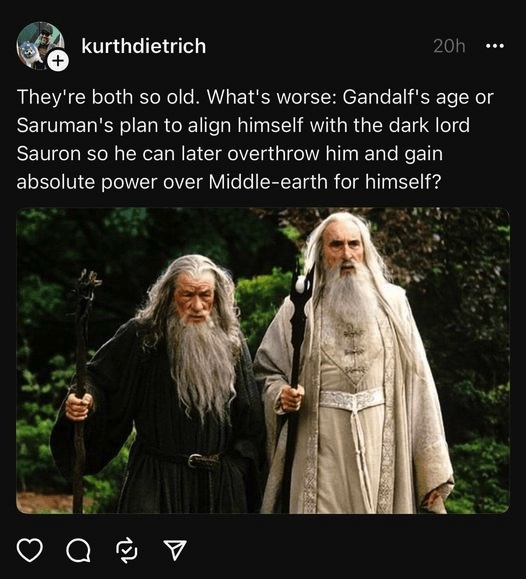Jan. 22nd, 2025 11:45 am
Two Spanish Books
I’ve had a new Spanish teacher for a while, a woman in Costa Rica who teaches over Skype. I took classes from her when I was at a language school there and I thought she was terrific, and she’s even better one-on-one. Of course individual classes mean that I can’t hide among other students, but I tell myself that that’s a good thing.
We’ve been reading a book of novellas called Archipiélagos, by Alma Mancilla -- and I’m starting to dislike the stories intensely. The first one, “El Oficial Jean,” is about a police inspector who is sent to a small Canadian island, Isla de Arena (Sand Island), to look for a missing girl. He moves listlessly through the island, conducting interviews with a series of grotesques. Finally he discovers a dead body and returns home, but the body turns out to be that of a man.
In the second story, “Recep,” the title character is a sailor, originally from Turkey and now a Canadian citizen. He is shipwrecked with his crew on Sand Island, and after a stay in the hospital he goes back to Turkey, living in the house of his dead grandparents. For some reason he decides to look for Ipek, a woman he broke up with thirty years ago. He moves listlessly through Istanbul, conducting interviews with a series of grotesques, but in the end he goes back to sea without finding her.
These stories have everything I dislike in fiction. The characters barely have any motivation (Recep still isn’t sure how he feels about Ipek), they dislike the people they meet, they spend whole days off from their searches lying in bed or staring off into space. Their guesses about what is happening are so far off the mark they seem like comedy, though I don’t know if the writer intended that. In the end, not only do they fail, they take nothing away from their experiences.
My teacher says that this kind of story is more popular among latinoamericanos, that they seem to find it easier to live with uncertainty and mystery. I tell her that in the US we want to like or feel something in common with the main character, and we prefer to see most of the loose ends tied up -- though I agree with her that this can sometimes lead to stories that are rote or formulaic. I wanted the inspector in “El Oficial Jean” to discover clues about the missing girl, some of which would lead to other clues and finally to finding her, dead or alive. I wanted Recep to find Ipek and for their relationship to play out in some way -- she’s married and has forgotten him, she’s happy to see him, he realizes that he never liked her or that he loves her, though i realize that with a happy-ever-after ending there's that risk of devolving into cliche.
After we finished the first two novellas I asked her if we could read something else. She pointed out that there are only two more in the collection, and that the stories interconnect and might come to a resolution at the end. When that didn’t move me she held out another inducement: After this book we can start on Pedro Páramo.
I saw the movie of Pedro Páramo on Netflix recently. The novel it’s based on, by Juan Rulfo, is one of the earliest examples of magic realism in Latin America; it was published in 1955, 12 years before One Hundred Years of Solitude, and some critics think it’s even better than Gabriel García Márquez’s novel. Despite the fact that I’d loved One Hundred Years of Solitude when I first read it, and that I’ve been studying Spanish for a while now, I’d never heard of it until the movie came out.
The movie is about a man looking for his father, the title character, and discovering that the town where his father lived is in ruins. As he searches he comes to learn how his father’s cruelty destroyed the town.
The story moves seamlessly between past and present, life and death, reality and fantasy. In one flashback scene, a man knocks on a woman’s door at night. He’s been visiting his girlfriend, but, as he tells the woman, he found out that the girlfriend doesn’t exist. “I’m so sorry,” the woman says. “You’re dead.” That’s the kind of comment to send a shiver all through your body.
I’m eager to read the book, so I agreed to plow through the rest of Archipiélagos. If Pedro Páramo as good as the movie, or even if it isn’t, I’ll review it here. I might even have something positive to say about Archipiélagos, though right now I doubt it.
We’ve been reading a book of novellas called Archipiélagos, by Alma Mancilla -- and I’m starting to dislike the stories intensely. The first one, “El Oficial Jean,” is about a police inspector who is sent to a small Canadian island, Isla de Arena (Sand Island), to look for a missing girl. He moves listlessly through the island, conducting interviews with a series of grotesques. Finally he discovers a dead body and returns home, but the body turns out to be that of a man.
In the second story, “Recep,” the title character is a sailor, originally from Turkey and now a Canadian citizen. He is shipwrecked with his crew on Sand Island, and after a stay in the hospital he goes back to Turkey, living in the house of his dead grandparents. For some reason he decides to look for Ipek, a woman he broke up with thirty years ago. He moves listlessly through Istanbul, conducting interviews with a series of grotesques, but in the end he goes back to sea without finding her.
These stories have everything I dislike in fiction. The characters barely have any motivation (Recep still isn’t sure how he feels about Ipek), they dislike the people they meet, they spend whole days off from their searches lying in bed or staring off into space. Their guesses about what is happening are so far off the mark they seem like comedy, though I don’t know if the writer intended that. In the end, not only do they fail, they take nothing away from their experiences.
My teacher says that this kind of story is more popular among latinoamericanos, that they seem to find it easier to live with uncertainty and mystery. I tell her that in the US we want to like or feel something in common with the main character, and we prefer to see most of the loose ends tied up -- though I agree with her that this can sometimes lead to stories that are rote or formulaic. I wanted the inspector in “El Oficial Jean” to discover clues about the missing girl, some of which would lead to other clues and finally to finding her, dead or alive. I wanted Recep to find Ipek and for their relationship to play out in some way -- she’s married and has forgotten him, she’s happy to see him, he realizes that he never liked her or that he loves her, though i realize that with a happy-ever-after ending there's that risk of devolving into cliche.
After we finished the first two novellas I asked her if we could read something else. She pointed out that there are only two more in the collection, and that the stories interconnect and might come to a resolution at the end. When that didn’t move me she held out another inducement: After this book we can start on Pedro Páramo.
I saw the movie of Pedro Páramo on Netflix recently. The novel it’s based on, by Juan Rulfo, is one of the earliest examples of magic realism in Latin America; it was published in 1955, 12 years before One Hundred Years of Solitude, and some critics think it’s even better than Gabriel García Márquez’s novel. Despite the fact that I’d loved One Hundred Years of Solitude when I first read it, and that I’ve been studying Spanish for a while now, I’d never heard of it until the movie came out.
The movie is about a man looking for his father, the title character, and discovering that the town where his father lived is in ruins. As he searches he comes to learn how his father’s cruelty destroyed the town.
The story moves seamlessly between past and present, life and death, reality and fantasy. In one flashback scene, a man knocks on a woman’s door at night. He’s been visiting his girlfriend, but, as he tells the woman, he found out that the girlfriend doesn’t exist. “I’m so sorry,” the woman says. “You’re dead.” That’s the kind of comment to send a shiver all through your body.
I’m eager to read the book, so I agreed to plow through the rest of Archipiélagos. If Pedro Páramo as good as the movie, or even if it isn’t, I’ll review it here. I might even have something positive to say about Archipiélagos, though right now I doubt it.
Tags:








